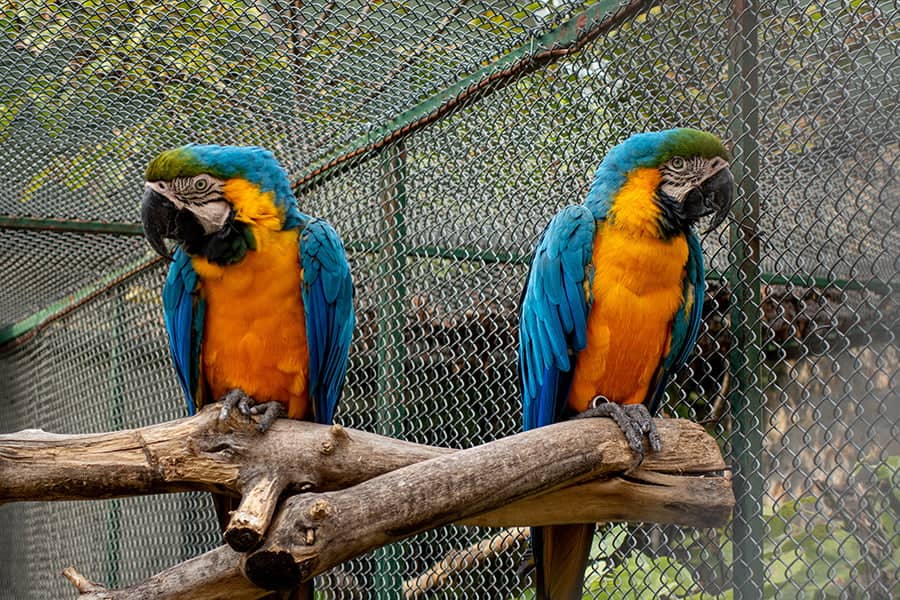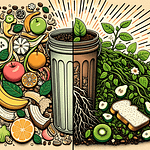
Introduction
In the intricate dance of human relationships, understanding the rhythm and patterns of our emotional connections can be both enlightening and challenging. Enter the world of attachment theory, a psychological framework that shines a light on how our earliest bonds influence our adult relationships. While many of us might have stumbled upon terms like ‘secure’ or ‘anxious’ attachment in a late-night internet deep dive, there’s one style that often remains in the shadows: disorganized attachment.
Disorganized attachment, often transitioning into what’s known as fearful-avoidant attachment in adulthood, is a complex and sometimes perplexing pattern. It’s like the unexpected twist in a love song, where the melody is both familiar yet hard to grasp. For those who resonate with this attachment style, relationships can sometimes feel like navigating a maze without a clear map. They might ask themselves: Why do I swing between wanting closeness and craving distance? Why does trust seem like a mountain too steep to climb, even when there’s no sign of betrayal?
But here’s the silver lining: recognizing the signs of disorganized attachment is the first step towards understanding, healing, and cultivating healthier relationships. In this guide, we’ll delve deep into the signs of disorganized attachment in adults, its implications, and the pathways to healing. So, whether you’re here out of curiosity, personal exploration, or a thirst for knowledge, let’s embark on this journey together, unraveling the complexities of love and attachment.
Table of Content
Background on Attachment Theory
Ever felt like relationships are a puzzle, and you’re missing the box with the big picture? Enter the world of attachment theory, our guide to understanding the intricate dance of human connections. British psychologist John Bowlby was the first to lay down the tracks of this theory in the mid-20th century. Inspired by the bonds between children and their caregivers, he theorized that our earliest interactions set the stage for our future love stories.
His collaborator, Mary Ainsworth, took this a step further. Through her “Strange Situation” study, she gave us a front-row seat to the diverse ways children react to separation and reunion with their primary caregivers. It’s like watching different genres of love stories unfold, each with its unique script.
Here’s a snapshot of their findings:
- Secure Attachment: These individuals are the rock stars of relationships. They’ve mastered the art of balancing closeness with independence, forming bonds that are both deep and free.
- Anxious-Preoccupied Attachment: Here, love is intense, sometimes feeling like a rollercoaster. There’s a hunger for closeness, often accompanied by the haunting fear of abandonment.
- Dismissive-Avoidant Attachment: Picture someone guarding their heart behind a fortress. They value their space, sometimes to the point of keeping emotional connections at bay.
- Disorganized (Fearful-Avoidant) Attachment: This is where the waters get murky. It’s a whirlwind of emotions, a blend of the anxious and avoidant worlds.
As we delve deeper into the enigma of disorganized attachment, remember: our past shapes us, but it doesn’t define us. With insight and a touch of guidance, we can rewrite our relationship scripts, turning challenges into opportunities for growth.
Understanding Disorganized Attachment
Navigating the world of relationships can sometimes feel like steering a ship through uncharted waters. And when it comes to disorganized attachment, the waters can be particularly turbulent. But fear not, dear reader, for understanding is the compass that can guide us to smoother seas.
Disorganized attachment is the wild card in the deck of attachment styles. Born from the complex interplay of early experiences, it’s like a tapestry woven with threads of both anxiety and avoidance. Imagine craving a loved one’s embrace one moment and recoiling from it the next. It’s a dance of contradictions, where the steps of desire and fear often intertwine.
But how does the chaos of disorganized attachment in childhood evolve as we grow? As the years roll on, this attachment style often morphs into what experts term as fearful-avoidant in adulthood. The name itself paints a picture: a blend of apprehensions and barriers, a yearning for connection shadowed by the dread of getting too close.
Now, you might wonder, what fuels this paradoxical pattern? The roots often trace back to our formative years. Children who experience inconsistent caregiving – moments of warmth punctuated by periods of neglect or trauma – can develop a skewed relationship compass. Their inner world becomes a landscape of mixed signals, where trust and mistrust, love and fear coexist.
But here’s the beacon of hope: identifying with disorganized attachment isn’t a life sentence of relationship turmoil. It’s merely a starting point, a signpost indicating where we’ve been, not dictating where we can go. As we journey further, we’ll uncover the signs that might hint at disorganized attachment in adults and, more importantly, the bridges that can lead to healing and transformation.
Signs of Disorganized Attachment in Adults
Ah, the signs. Just as a sailor looks to the stars for guidance, understanding the signs of disorganized attachment can be our North Star in the vast sea of relationships. These signs aren’t just behaviors; they’re whispers from our past, echoes of old wounds and memories. Let’s tune in and listen closely.
- Inconsistent Behavior in Relationships: It’s like watching a pendulum swing. One moment, there’s an intense pull towards a partner, and the next, an abrupt push away. It’s not just hot and cold; it’s a tempest of emotions that can leave both parties feeling bewildered.
- Difficulty Trusting Partners: Trust, that delicate thread that binds hearts, can feel like a tightrope for those with disorganized attachment. Even in calm waters, there’s an underlying fear of a storm, a lurking doubt that betrayal might be just around the corner.
- Intense Emotional Responses: Picture a heart that feels too deeply, too quickly. A minor disagreement might feel like an impending breakup, and a small gesture of love can be overwhelmingly moving. The emotional volume is often turned up high.
- Struggles with Intimacy: Intimacy, that beautiful dance of souls, can sometimes feel like a maze. There’s a yearning to be close, to be understood, but also a paralyzing fear of vulnerability, of being truly seen and potentially hurt.
- Fear of Abandonment: Behind the eyes of someone with disorganized attachment lies a haunting question: “Will you stay?” Every goodbye, every silence, can stir up deep-seated fears of being left behind.
- Difficulty Regulating Emotions: Emotions aren’t just felt; they’re a tidal wave. There can be challenges in managing these surges, leading to moments of overwhelming joy, sadness, anger, or fear, often without a clear trigger.
- Confusion About Self-worth: The mirror of self-perception can be foggy. On some days, there’s a radiant glow of self-love, and on others, shadows of doubt and feelings of unworthiness.
Recognizing these signs is like piecing together a puzzle, revealing a picture of one’s emotional landscape. But remember, dear reader, these signs are not flaws or failings. They’re markers on the map of our journey, pointing to areas that might need a little extra care, understanding, and perhaps, healing. As we sail ahead, we’ll delve into the broader implications of these signs and, most importantly, the lighthouses that can guide us to safer shores.
Implications of Disorganized Attachment in Relationships
Relationships, in all their beauty and complexity, are like gardens. Each attachment style brings its own set of seeds, and with disorganized attachment, the flora can be both enchanting and bewildering. Let’s take a stroll through this unique garden and understand its landscape.
- Impact on Communication: Conversations can sometimes feel like navigating a labyrinth. There’s a desire to express and connect, but the pathways might be obscured by fears, leading to misinterpretations or missed cues. It’s like trying to converse in a garden where some paths are clear, while others are overgrown.
- Challenges with Trust and Intimacy: Trusting and drawing close can be akin to tending to a delicate bloom. While there’s a yearning to nurture and protect it, the shadows of past frosts might lead to hesitance, affecting the blossom of true intimacy.
- Patterns of Push and Pull: This garden has its magnetic spots. There are areas that irresistibly draw one in, and others that push away. Relationships can oscillate between these zones, leading to cycles of closeness and distance.
- Influence on Self-Perception: Amidst the diverse flora, there’s the ‘Mirror Tree’. Its reflections can vary – from radiant self-worth on some days to shadows of doubt on others. This ever-changing self-view can influence interactions and expectations within relationships.
- Potential Parenting Challenges: When it’s time to sow seeds for a new generation, past patterns can resurface. The desire to nurture might be accompanied by fears of repeating past cycles, leading to an intricate dance of caregiving.
- Effects on Mental Well-being: Walking through this garden can be both invigorating and draining. The rich tapestry of emotions and experiences can influence mental health, sometimes leading to moments of introspection, anxiety, or the need for healing.
But here’s the heartening part: every garden, no matter how intricate, can be tended to and transformed. With the right tools, understanding, and perhaps a guiding hand, the challenges of disorganized attachment can be addressed, turning potential thorns into blossoming opportunities. As we journey further, we’ll explore the nurturing steps that can lead to a more harmonious garden of relationships.
Overcoming Disorganized Attachment
Navigating the maze of disorganized attachment can sometimes feel like you’re walking through a dense fog, right? One moment you’re sure of your path, and the next, everything’s a blur. But here’s the thing: every one of us has the power to clear that fog, step by step. Let’s chat about some tried-and-true ways folks have found their way to sunnier skies.
- Self-awareness: It all starts with a good heart-to-heart with yourself. Ever had those “Aha!” moments when you suddenly get why you acted a certain way? That’s gold. Dive deep, journal, reflect, and embrace those revelations.
- Therapeutic Interventions: Think of therapy as having a chat with a wise old friend who’s walked this path before. Whether it’s CBT, DBT, or attachment-focused therapy, it’s like having a trusty flashlight guiding you through the fog.
- Building Secure Relationships: Ever found that one friend who just gets you? The one who’s there, rain or shine? Surrounding yourself with these rockstars can make all the difference. They’re the anchors in the stormy seas of attachment challenges.
- Mindfulness and Grounding Techniques: Picture this: you’re feeling overwhelmed, and then you take a deep breath, feeling the ground beneath your feet. It’s simple, but oh-so-powerful. These moments of mindfulness can be your secret weapon against emotional whirlwinds.
- Educate and Empower: Dive into books, attend workshops, or just have coffee chats with folks who’ve been there. Knowledge isn’t just power; it’s like getting a map for your journey.
- Seek Consistency: Life’s chaotic enough, right? Setting routines, carving out “me time,” and just having some predictability can be a balm for the soul.
- Celebrate Progress: Raise a toast to yourself! Every insight, every hurdle crossed is worth celebrating. It’s not just about the destination; it’s about cherishing every step of the journey.
So, my friend, as we continue this chat, remember: you’re not alone on this path. With a sprinkle of understanding, a dash of effort, and maybe a few laughs along the way, we can all find our way to clearer, sunnier relationship skies.
Conclusion
Well, dear reader, here we are, having journeyed together through the intricate tapestry of disorganized attachment. It’s been quite the ride, hasn’t it? From understanding the early brushstrokes of attachment theory to navigating the sometimes stormy seas of disorganized attachment, we’ve covered a lot of ground.
But if there’s one thing I hope you’ll take away from our chat, it’s this: understanding your attachment style isn’t about labeling or boxing yourself in. It’s about gaining insights, finding clarity, and most importantly, empowering yourself to craft the kind of relationships you truly desire.
Remember those foggy days we talked about? Well, every bit of understanding, every step towards healing, is like a ray of sunshine breaking through. And the beauty of it all? You’re not walking this path alone. Whether it’s the wisdom of experts, the support of loved ones, or the shared experiences of folks who’ve been there, there’s a whole community cheering you on.
So, as you continue your journey, embrace the lessons, cherish the growth, and always know that in the grand story of relationships, you have the power to write your own beautiful chapters.








Leave a Reply